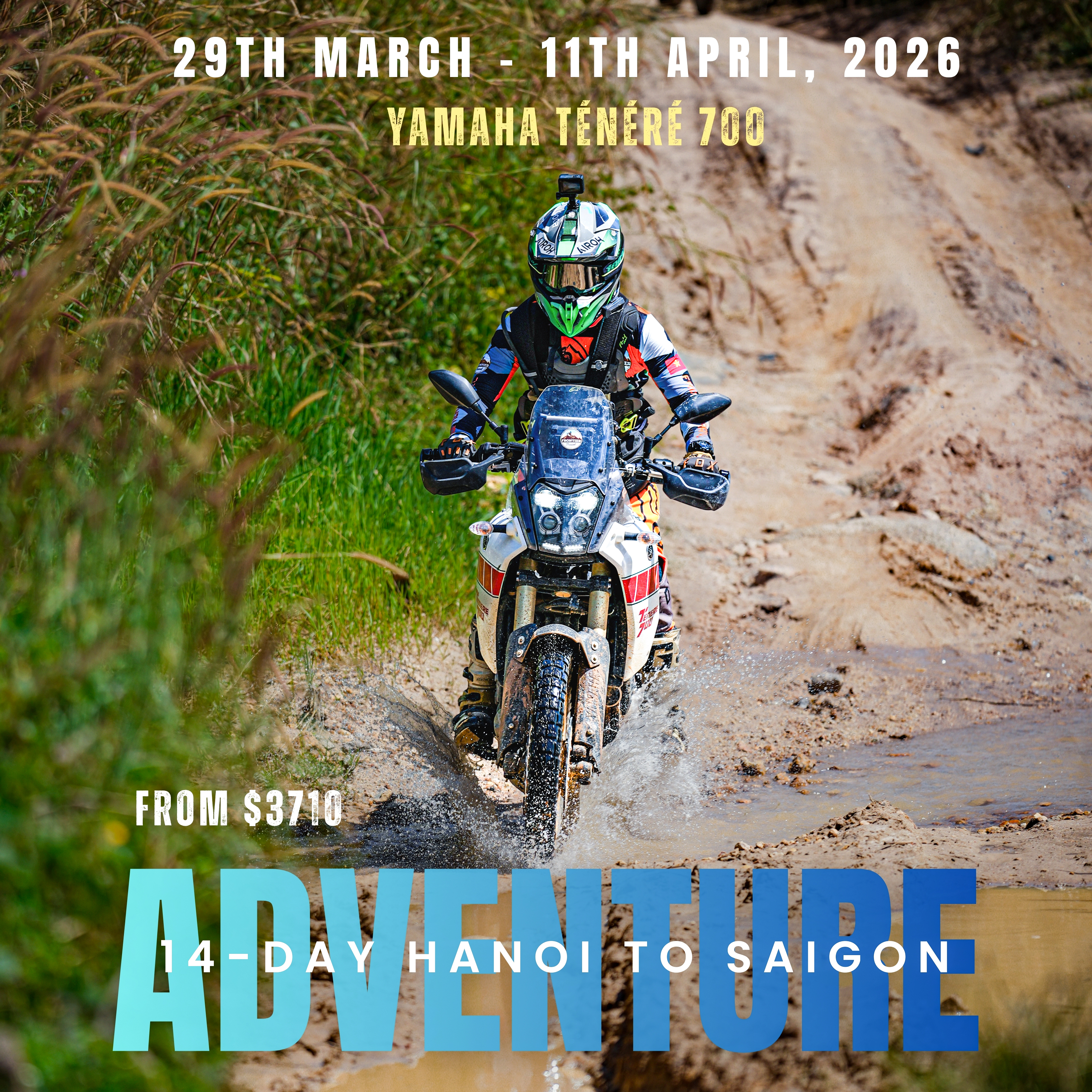.png)
(11Th – 17Th July, 2026) Northwest Vietnam 7-Day Expedition: Ride The Highlands, Passes & Wild Valleys
This 7-day expedition takes you deep into Northwest Vietnam—where challenging passes, remote valleys, and highland cultures define every mile. Instead of just sightseeing, this ride puts you in the landscape: mountain switchbacks, river crossings, historic routes, and real interactions with ethnic communities. From Mai Chau’s quiet valley to the cloud belts of O Quy Ho and the island-dotted waters of Thac Ba Lake, each day builds momentum toward a true motorbike journey.
Itinerary

.png)
.png)

.png)
.png)
.png)

Departing Hanoi, we head north toward Hong Son Lake, where calm jade waters and limestone formations mark the shift from city traffic to open, refreshing countryside. The ride is smooth and steady, giving you time to settle into the rhythm of the road.
By mid-afternoon, we reach Mai Chau Valley—a quiet lowland surrounded by rice fields and Thai villages. You can stretch your legs with a short village walk or simply relax before dinner. In the evening, a traditional Thai dance performance offers an authentic look into local culture. We wrap up the day with a comfortable overnight stay in a stilt house, a simple yet genuine window into everyday valley life.
.png)
After breakfast, we say goodbye to our hosts and ride toward the cooler highlands of Moc Chau. The climb brings a noticeable change in air and scenery, with long stretches of tea plantations and small ethnic communities scattered across the hills. It’s an easy, pleasant section of road that lets you enjoy both the landscape and the ride.
After lunch in Moc Chau, we follow Road 43—a quiet, scenic route with light traffic and clean views. The Da River ferry crossing provides a calm mid-day break before we continue on a smaller backroad into the mountains. By late afternoon, we reach Phu Yen, a modest rural town in Son La Province. Our rustic homestay for the night offers simple comfort and the kind of genuine hospitality that makes mountain travel memorable.
.png)
We start the day with the ascent over Lung Lo Pass, a 15-kilometer mountain route tied closely to Vietnam’s wartime history. During the 1954 Battle of Dien Bien Phu, this pass served as a key supply line and was heavily targeted by French air strikes. The remaining traces make Lung Lo not just a mountain road, but a reminder of resilience and sacrifice.
Now recognized as a national heritage site in Yen Bai Province, the pass combines steady riding, open viewpoints, and a clear sense of history. It’s not overly technical, but it’s one of the most meaningful stretches of the trip.
By late afternoon, we reach town and check into the hotel—a quiet evening to rest and prepare for the next day’s ride.
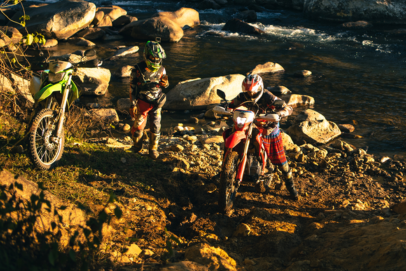
After breakfast, we leave Nghia Lo and head toward Mu Cang Chai. The route climbs steadily, starting with gentle tea-covered hills before approaching Khau Pha Pass—one of the highest and most well-known passes in the region. This section offers wide, open views, and we make practical stops along the way for photos and short breaks.
The ride continues through Tu Le Valley, a quiet rural basin known for its terraces and warm mineral streams. It’s a calm stretch of road that transitions smoothly into the deeper highlands.
By late afternoon, we reach Mu Cang Chai, an area recognized nationwide for its steep, layered rice terraces and strong Hmong cultural presence. We end the day at a Thai-run homestay—simple, comfortable, and a good place to rest after a solid day on the road.
.png)
Leaving Mu Cang Chai, we ride toward O Quy Ho Pass—one of the most notable high-altitude routes in Northern Vietnam. The climb brings shifting weather, moving clouds, and wide valley views. The road winds through slopes lined with tea, corn, and rice, and each section reveals a new angle of the rugged mountain range. It’s a steady, rewarding ride with plenty of worthwhile stops.
Reaching Sapa, we ease into the town’s mix of mountain atmosphere and ethnic culture. A quick visit to the Sapa Stone Church offers a look at one of the area’s key landmarks, often surrounded by local communities in traditional dress on market days.
As the day cools, we settle into a comfortable homestay—simple, clean, and well-positioned to enjoy Sapa’s evening air and relaxed pace.
.png)
After breakfast at the hotel, we ride downhill from Sapa toward Lao Cai City. Before moving on, we pause for a quiet coffee beside the Nam Thi River—the natural border between Vietnam and China. It’s a simple stop, but a memorable one, with a clear view of the river separating the two countries.
Leaving Lao Cai, we follow Road 70, then turn onto the quieter Road 152 toward Luc Yen. The landscape gradually shifts into palm forests and small rural communities as we approach Vu Linh, a Dao village located on the edge of Thac Ba Lake. Covering more than 23,000 hectares with over 1,300 small islands, Thac Ba is Vietnam’s largest man-made lake and home to several notable caves, including Hum, Cau Cuoi, and Bach Xa.
After lunch, we take a relaxed boat trip across the lake’s calm water and stop at a quiet island for a swim. Along the way, we pass local fishermen, small wooden boats, and forested shorelines—simple scenes that show the everyday rhythm of life here. It’s a good opportunity to connect with the Dao community and experience this peaceful lakeside area up close.
.png)
After breakfast, we start the final leg of the trip, riding southeast along Highway 2 toward Phu Tho. The road runs parallel to the Red River and offers steady, easy riding with open views of farmland and riverside villages. This section brings us out of the highlands and into the wider delta region, where rice fields, water buffalo, and daily rural life line the route.
After crossing the Black River by bridge, we continue toward Son Tay and merge onto the main road back to Hanoi. Our timing ensures we reach the city before late-afternoon traffic, keeping the last stretch smooth and stress-free.
Rolling back into Hanoi marks the end of the journey—a full week of mountain passes, cultural encounters, and the varied landscapes that define Northwest Vietnam.
.png)
.png)
.png)



Tour map
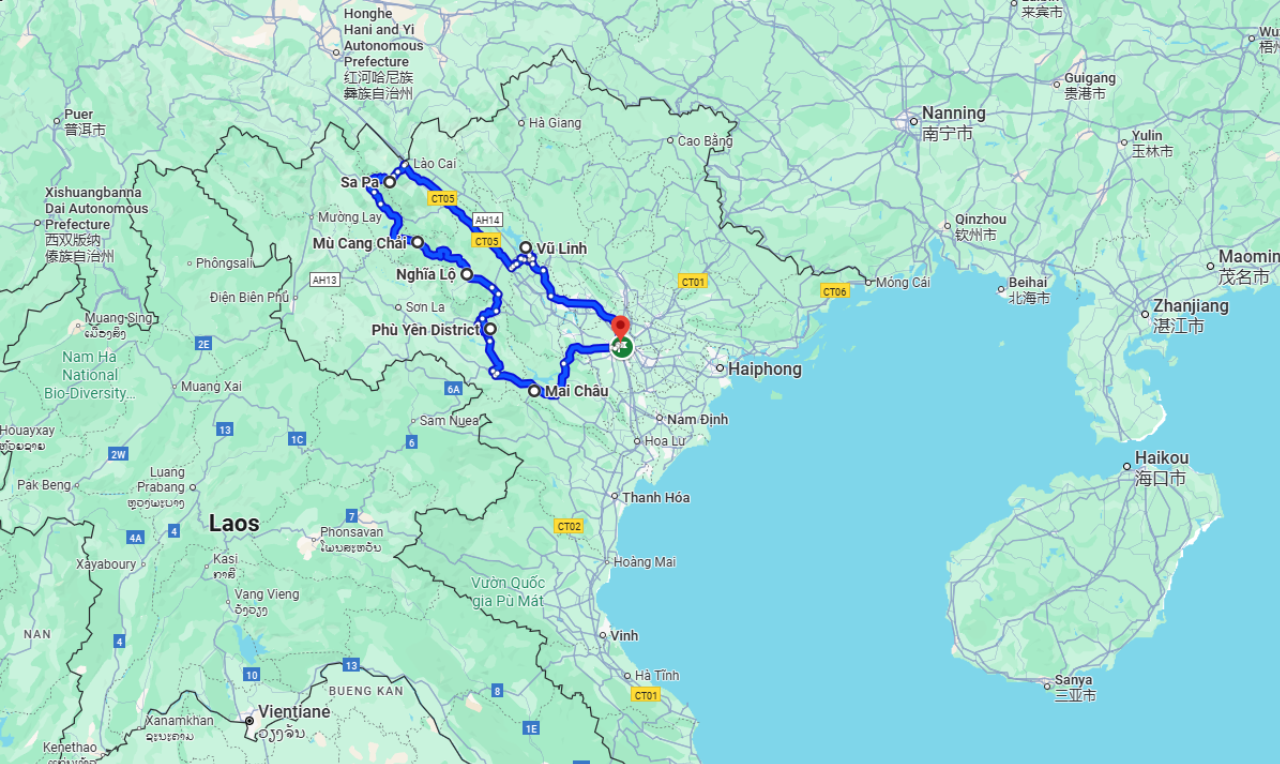
.png)
Supplementary information
Motorbike model
Frequently Asked Questions
Test Despite of the fact that Vietnamese government attempts to outlaw the practice, the US Dollars still acts as an alternative currency which is almost completely interchangeable with Vietnam Dong. Many prices, especially for hotels, tours and expensive restaurants, are still quoted in USD, though you can pay in dong if you’d rather - just check what exchange rate they’re using.
For everyday expenses, we recommend you carry a mix of US Dollars cash and Vietnam Dong. For larger items or when the exchange rate works in your favour, use dollars. For cyclos, local food stalls and small purchases, it’s best to use Vietnam Dong. In either case, make sure you always have a stock of small notes so that there is no need to worry about change.
Absolutely! If you and your friends are looking for a private, one-of-a-kind adventure, we’ll design a trip just for your group. Share your travel ideas with us through our Tailor Made Tour form or message us on WhatsApp (+84 962913811), and together we’ll create an itinerary that perfectly matches your interests, pace, and style.
Yes, solo travelers are more than welcome to join our scheduled group tours. We operate group departures every month. Simply contact us to check the upcoming dates, and we’ll be happy to arrange for you to join a suitable group.
Every journey is handcrafted to match your style — whether it’s off-road thrills, cultural immersion, or both. Along the way, you’ll connect deeply with local people, landscapes, and stories.
From well-maintained motorbikes and gear to 24/7 support, we prioritize your safety and comfort at every turn. Our support crew, guides, and mechanics have your back from start to finish.
We believe in giving back. By riding with us, you help support ethnic minority communities through our handmade craft shop in Hanoi — "With Love from the Mountains."
We keep our groups small to ensure a personal, flexible, and unforgettable experience — where everyone becomes part of the Frontier family.
.png)
.png)
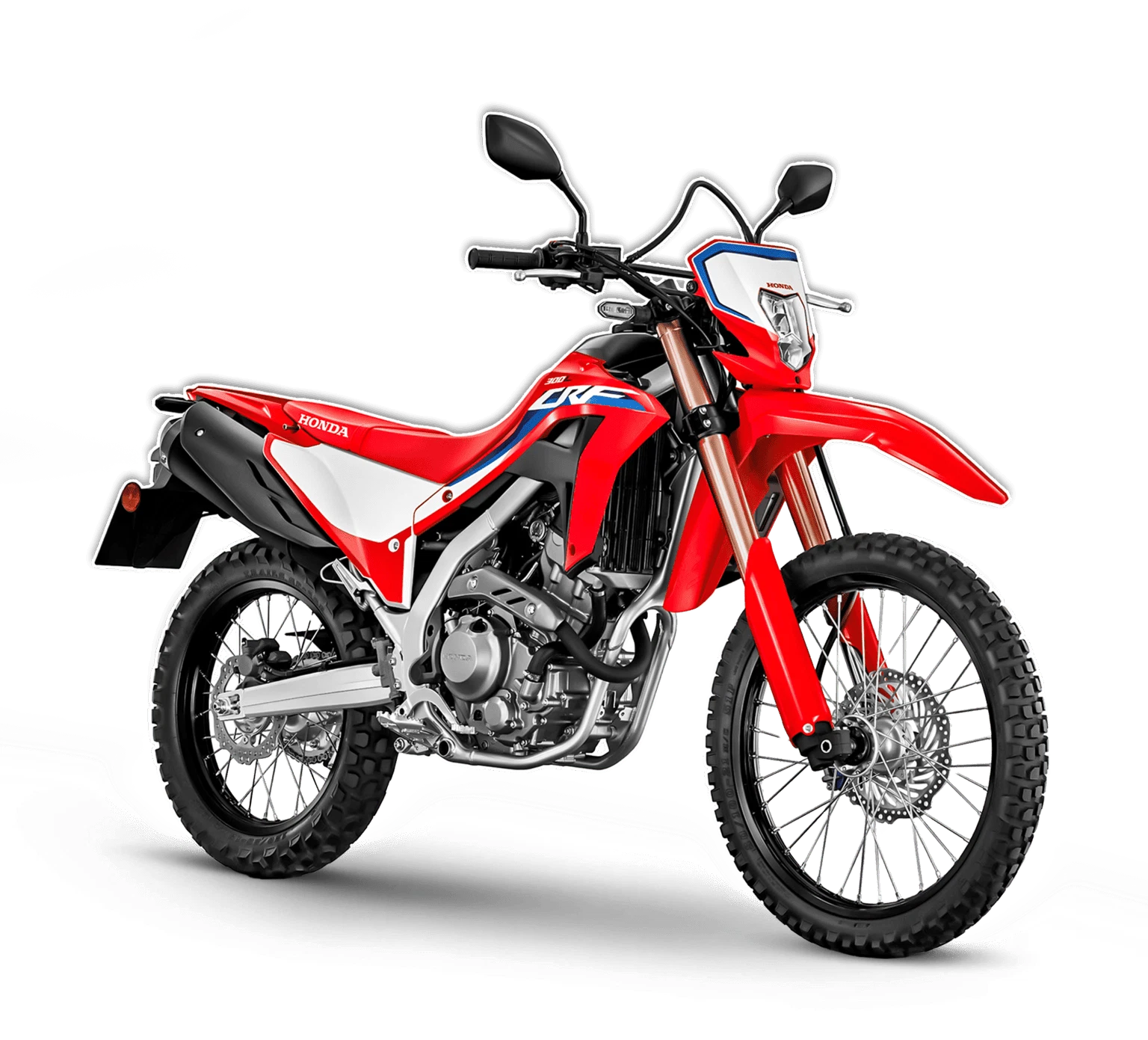


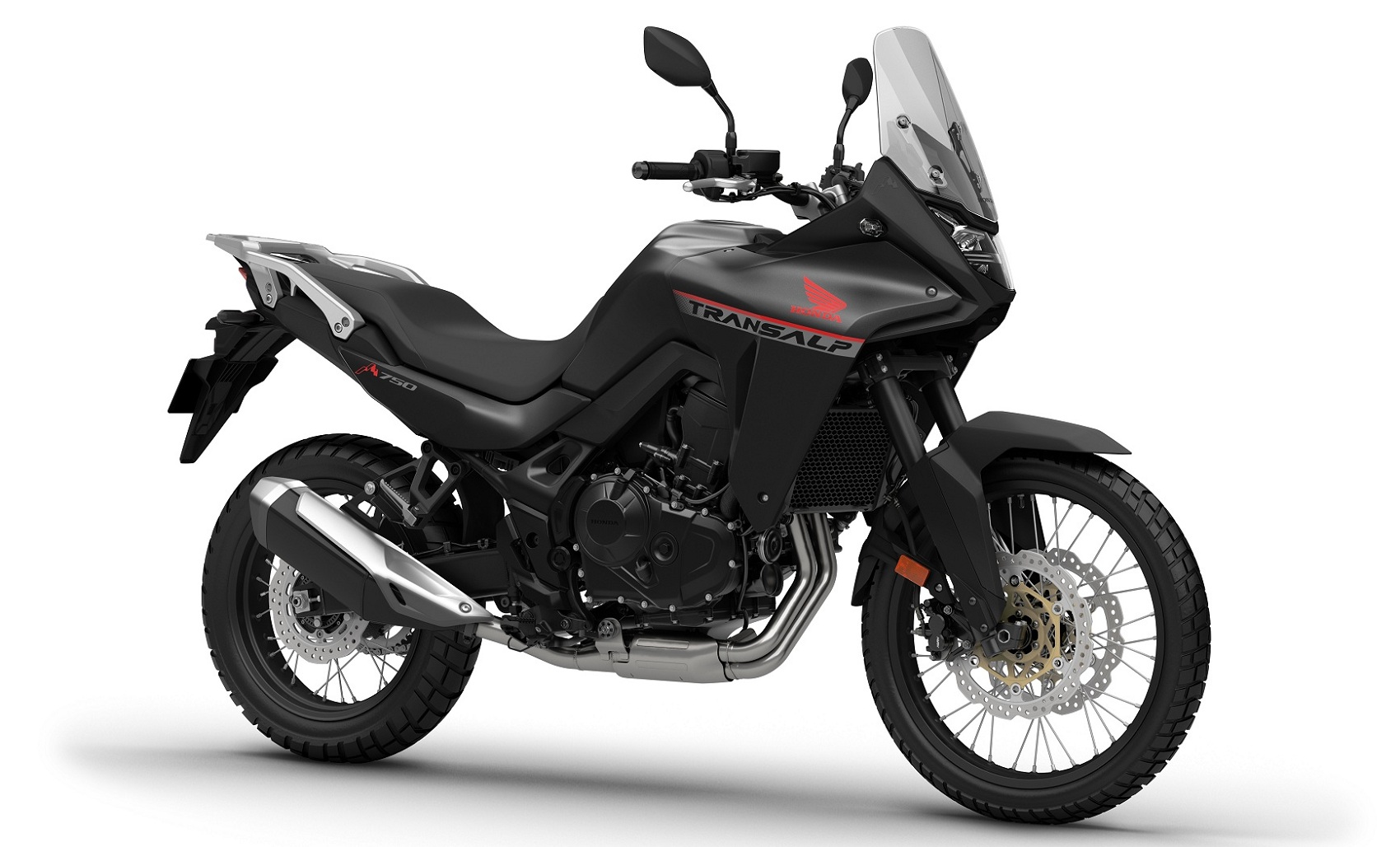
.png)
.png)
.png)
.png)
.png)
.png)

.png)
.png)

